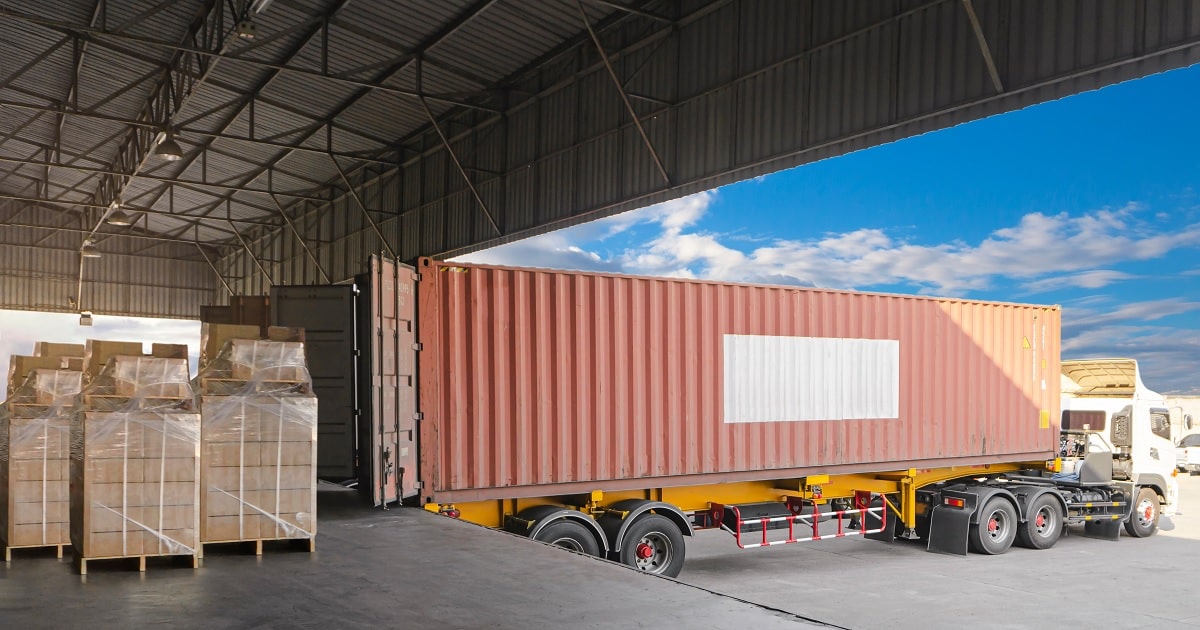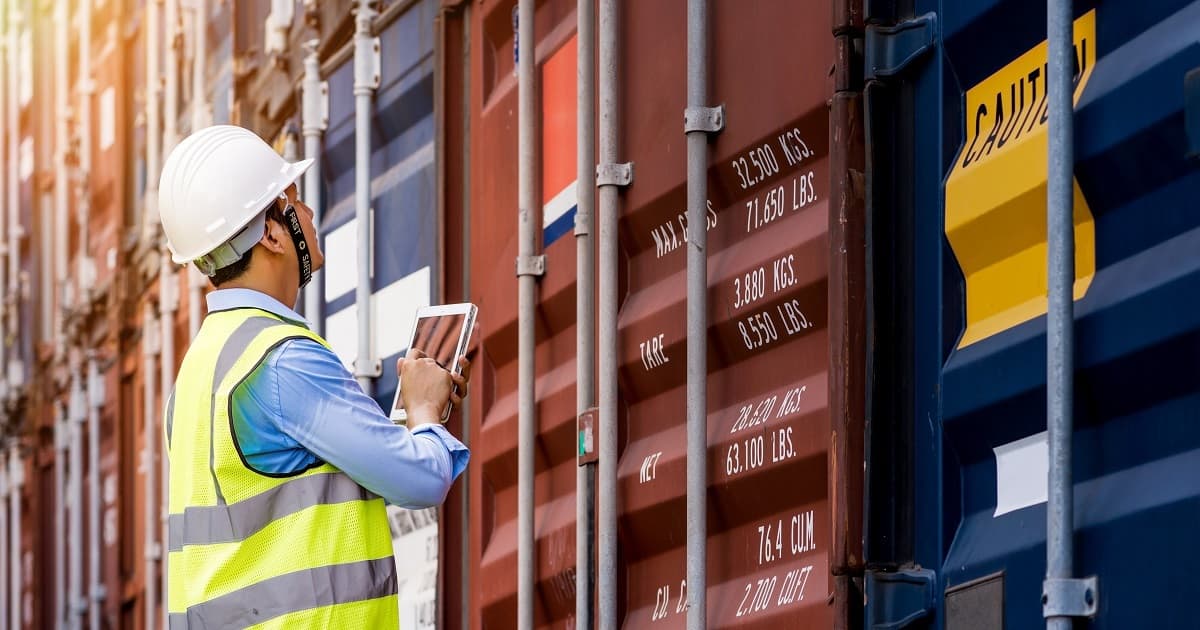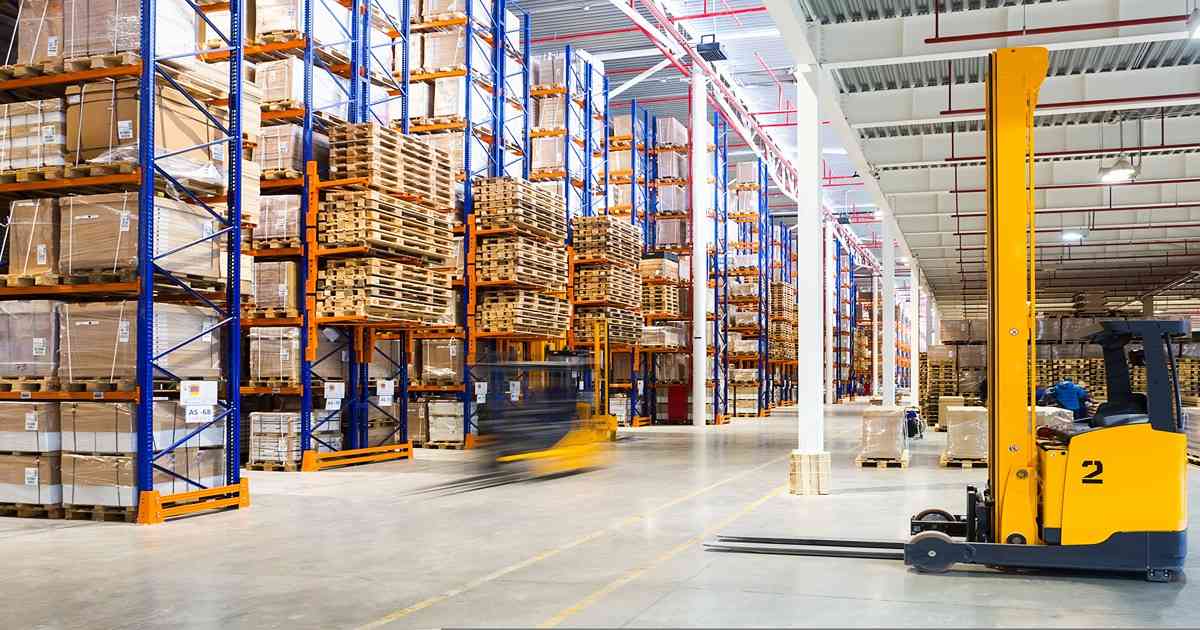
Warehousing and Distribution
Article | July 17, 2023
The logistics sector is experiencing a significant technological shift similar to that of all other industries due to the growing need for remote work solutions. Social networking, the Internet of Things (IoT), cloud-based logistics, and other technological advancements are reshaping the logistics industry and moving it in a new direction. Additionally, the supply chain and logistics as a whole are greatly influenced by factors like transportation and digital transformation.
Modern digital technology is fundamentally altering how various sectors function. Increased connectivity amongst the people has also increased the needs of customers, created new purchasing habits, and gave birth to an entirely new industry as a whole, e-commerce.
The Shift Towards the Could Technology
Over the past few years, the transportation and logistics industry has witnessed a shift towards digitization as more and more people have access to the internet and computer for day-to-day work.
From online grocery stores to local delivery apps and even on-demand airport shuttle services, the adoption of cloud technologies has given a viable solution to customers and businesses at a lower cost than before. As a growing number of businesses reevaluate their use of innovative technologies, cloud computing is becoming an increasingly serious and practical choice.
The cloud is of significant use in the world of freight transportation and logistics, as it stores crucial shipping information that can be accessed at any time via transportation management systems from anywhere. The technology is emerging as a game changer for the businesses operating in the logistics industry. Here is a list of benefits cloud technologies offer:
Logistical space planning
Real-time package updates
Leverage artificial intelligence (AI) and machine learning (ML)
Vehicle health monitoring
E-ticketing management
Final Thought
Cloud-based solutions have enormous potential to improve operational and financial efficiency in the transportation and logistics industry. Some facets of cloud-based solutions also have the ability to transform the overall shipping experience altogether. Assessing the merits of this technology, a large number of leading businesses are incorporating it for applications such as fleet-specific planning, shipment optimization, faster delivery, and others. In the coming years, cloud-based solutions are likely to become very popular in the supply chain industry as they keep getting better.
Read More

Transportation
Article | April 26, 2023
In the past couple of years, supply chain management has witnessed massive disruption. The implications of the pandemic have put pressure on manufacturers to revisit and reimagine how they manage their supply chains. This is why ERP software is so mission critical in supply chain management. It not only helps supply chain chiefs reduce overhead costs but also enhance efficiencies and timely deliveries.Here are a few ways ERP plays a role in supply chain management to keep it moving.
Complete Visibility
Having a 360-degree view of the supply chain is integral to making the right decisions regarding procurement and purchase of materials and inventory. It also allows suppliers to have complete control and course correct when necessary. The insight into the complete supply cycle allows suppliers to respond to customer queries better.
Inventory Tracking
ERPs are truly a one stop shop for manufacturers. They feature extensive inventory tracking on one system so manufacturers are in the loop about inventory control and can better optimize their inventory and resources. For manufacturers it is crucial to know where their inventory is, what has been shipped, what is on hand at all times. With ERPs, it becomes cheaper to keep a stock of the inventory and place orders when it’s running low.
Vendor Performance
Vendor performance is an essential aspect of supply chain management. Being able to compare vendors, measure certain quality and quantity metrics and identify bottle necks help suppliers choose the right vendor as well as gives purchasing departments the power to negotiate for better pricing by consolidating purchase. ERPs allow suppliers to do all the above and more.
Procurement
Procurement of goods can be a complex process if done without the right tools. It also impacts the whole supply chain so it is doubly imperative to ensure the procuring and supply of goods is on time. This is especially true in an environment of custom manufacturing. Add to that the requirement of procuring products with lengthy lead times, manufacturers need to take into considerations product that need to be ordered long before they are even designed. ERPs allow manufacturers to keep all departments including engineering and warehousing to work in sync and plan to procure goods on time.
Real-time Reports
Reporting is labor intensive and can be inefficient when it comes to gathering and processing data. With ERPs, manufacturers can generate reports in real-time and all manual data collection processes are replaced with automation, saving time and money in viewing the insights into the movement of products in the supply chain. It enables manufacturers to get a better understanding and make timely decisions that improve the overall efficiency of the supply chain.
To Conclude
ERP systems offer endless opportunities for manufacturers to improve their processes, save time and resources and optimize and enhance inventory planning. With the right tools, it is possible to establish supply chain management that outperforms and is resilient even in disruptive times.
Read More

Supply Chain
Article | May 22, 2023
Even though there are distinct differences between demurrage, detention and port charges, many are still oblivious to these differences and there have been several questions on this blog relating to these charges.
This article is about how demurrage, detention, and port charges work.
International Trade and CostsWhen it comes to international trade, majority of the buyers and sellers use Incoterms to decide what each other’s responsibilities and liabilities are in terms of the business, especially related to costs.
Generally, there is very little room to manoeuvre in terms of additional and unbudgeted costs incurred on the shipment and therefore in their own interest it is important that the buyers and sellers take necessary precautions to ensure that all known costs relating to the business are discussed and finalised before the shipment commences.
There are many entities involved in the process of shipping a container from Point A to Point B, each with their own cost component, all of which have to be covered either by the seller or the buyer.
Demurrage, detention and port charges are just some of these costs that may be applicable in a shipment.
While some of the port charges are valid and unavoidable, demurrage, detention and some of the port charges (like port storage, early arrival, late arrival, amendment, shifting etc) are entirely avoidable if everyone in the chain follows the process that they need to follow.
What are port charges?
Port charges, as the name suggests are a set of charges levied by the port or terminal which the container passes through.In terms of container shipments, port charges may include but not limited to below :
Terminal Handling Charge (THC)
Is quite simply the charge levied by the port for the loading and discharging of a container from the ship.. THC differs from port to port, terminal to terminal around the world and is charged both by the load port and discharge port.If the cargo is transhipped anywhere along the route, then the transhipment port also charges this THC but that is paid by the shipping line directly to the port and this quantum is usually included in the ocean freight charged by the line.
Early Arrival Charge
A charge levied by some of the ports/terminals for a container that arrives in the terminal BEFORE the stacks into which it is to be taken has been opened.. Early arrival can happen due to various reasons like a container missed the stacks for the previous vessel narrowly, but since the container is packed, it needs to be taken to the port, The acceptance of containers prior to the stacks/gate open is at the discretion of the Port/Terminal Operator and on the circumstances surrounding the operation of the vessels.
Late Arrival Charge
A late arrival charge is a charge levied by the port for a container that arrives in the terminal AFTER the stacks into which it is to be taken has been closed.. This could be due to delays in documentation, packing delays, inspection, trucking delays and many other situations.The acceptance of containers after the closing of stacks/gate is at the discretion of the Port/Terminal Operator and on the circumstances surrounding the operation of the vessels and if the containers can be accepted without disrupting the schedule of the vessel and ports.
Stuffing/Destuffing of Containers
Some ports/terminals allow the stuffing (packing)/de-stuffing (unpacking) of the containers within the port area and charge customers based on the port tariff.This activity may happen at ports that provide CFS services and allow containers to be packed or unpacked in the port or due to some mistakes when the cargo was originally packed – say incompatible hazardous cargoes packed together.Depending on the port/terminal/country, the port charges may be charged directly to the customer (importer or exporter) or to the shipping line, who in turn will charge this to the customer.
Of course, this is not the full list of port charges but these charges have been mentioned as it relates to the subject under discussion,Demurrage and DetentionWhile some of these port charges may be unavoidable, demurrage and detention charges on the other hand are avoidable charges, but in a lot of cases due to mishandling, miscommunication, misunderstandings and not following the proper protocols, these charges occur..When they do occur, these charges may create quite a financial impact on the whole business and sometimes these costs could be so prohibitive that some customers abandon their cargoes at the destination due to these costs.
Although the most common market practice is to combine demurrage and detention, there are several cases where these are charged separately, and therefore it is important to know the difference between demurrage and detention.
Read More

Software and Technology
Article | April 10, 2023
Efficient demand forecasting techniques transform supply chain management, help optimize inventory levels, streamline operations, improve customer satisfaction, and achieve a competitive edge.
Contents
1. How Accurate Demand Forecasting Impacts Business Operations and Profitability?
2. Navigating the Pitfalls of Traditional Demand Forecasting
2.1 Limitations of Manual Forecasting Methods
2.2 Inaccuracy and Inconsistency in Demand Prediction
2.3 Multiple Products and Markets Challenges
2.4 Influence of External Factors on Demand Forecasting
3. Advanced Demand Forecasting Techniques for Supply Chain Management
3.1 Statistical Forecasting
3.2 Collaborative Demand Planning
3.3 Demand Sensing and Real-time Data Analytics
3.4 Agile Supply Chain Management Practices
4 Summing up
1. How Accurate Demand Forecasting Impacts Business Operations and Profitability?
Accurate demand forecasting plays a vital role in determining the operations and profitability of a business. By anticipating future demand, companies can more effectively plan their production, inventory management, and supply chain activities to meet customer needs while minimizing costs.
Additionally, accurate demand forecasting can aid businesses in enhancing customer satisfaction by proactively meeting customer needs and expectations, improving customer experiences and increasing customer loyalty. To generate actionable insights that drive informed decision-making, businesses must leverage advanced analytics and predictive modeling techniques that combine data from various sources with industry-specific knowledge and expertise.
“Businesses that leverage advanced analytics and predictive modeling techniques for demand forecasting report an average of 5% improvement in their supply chain efficiency.”
(Source: A survey by Deloitte)
Supply chain businesses frequently rely on sales data from the past, which may not be sufficient in the complex and rapidly changing business environment. Businesses might not observe an improvement in operations and profitability if they rely solely on conventional methods.
2. Navigating the Pitfalls of Traditional Demand Forecasting
As businesses strive to optimize their supply chain operations and meet customer demand, traditional demand forecasting methods can often hinder their efforts. In this context, it is essential to navigate the pitfalls of such techniques to achieve success in supply chain management.
2.1 Limitations of Manual Forecasting Methods
Manual forecasting methods have limitations that can affect demand forecasting accuracy in supply chain management. Frequently based on historical data, these methods can overlook emerging trends in supply chain management and alterations in customer behavior. In addition, manual processes are time-consuming, prone to error, and incapable of incorporating real-time supply chain data. As a result, businesses struggle to optimize supply chain operations and meet customer demand.
In addition, traditional forecasting methods can influence the ability to accurately predict demand, resulting in overstocked inventory, delivery delays, and, ultimately, poor customer satisfaction. Inaccurate demand forecasts can also result in poor purchasing decisions and increased carrying costs, negatively impacting profitability.
2.2 Inaccuracy and Inconsistency in Demand Prediction
Inaccuracy and inconsistency in demand forecasting pose significant obstacles in managing the supply chain. This is the case in the dynamic business environment, where market conditions can change rapidly, making it challenging for companies to keep up with shifting demand patterns. As traditional demand forecasting methods depend heavily on historical data, they produce inaccurate forecasts that do not reflect real-time market changes.
In addition, inconsistency in demand forecasting can also result in a mismatch between supply and demand, leading to missed opportunities or excess inventory. As a result, creating an effect on company’s bottom line in addition to customer satisfaction.
2.3 Multiple Products and Markets Challenges
Accurate demand forecasting is crucial to the success of supply chain management. When there are multiple products and markets to manage, it becomes a challenge for traditional demand forecasting. Different products and markets may have varying demand patterns and drivers, making it difficult for businesses to accurately forecast demand.
Manual processes and siloed data can hinder visibility and the ability to identify cross-product or cross-market trends, making supply chain optimization operations and meeting customer demand more complex. Managing multiple products and markets is one of the challenges of traditional demand forecasting when businesses operate in various markets with varying customer preferences and demand patterns for products.
2.4 Influence of External Factors on Demand Forecasting
External factors can significantly impact the demand forecasting accuracy for supply chain optimization. These factors are often unpredictable, and conventional methods may not account for them. The external factors affecting the supply chain include natural disasters, economic recessions, and sudden changes in consumer behavior.
In addition, political and regulatory modifications, such as tariffs or trade agreements, can affect the supply and demand of particular products. Therefore, businesses must incorporate these external factors into their demand forecasting models and advance the process, as traditional demand forecasting methods cannot predict accurate future demand patterns and ensure optimal supply chain operations.
3. Advanced Demand Forecasting Techniques for Supply Chain Management
To avoid the above-mentioned pitfalls, companies need to adopt advanced demand forecasting techniques that enable capturing and analyzing huge data from various sources to generate accurate and real-time demand forecasts.
3.1 Statistical Forecasting
Statistical forecasting is an advanced method for demand forecasting in supply chain management that utilizes complex algorithms and statistical models to analyze historical data, identify trends, and generate forecasts. This method employs numerous statistical techniques, including regression analysis, time-series analysis, and exponential smoothing, among others.
Statistical forecasting can help businesses overcome some of the limitations of traditional manual forecasting methods because it is more objective, data-driven, and capable of identifying trends and patterns which are not apparent with manual forecasting methods. As a result, by utilizing statistical forecasting, businesses can increase demand forecasting accuracy, optimize inventory management, and better align supply and demand, resulting in enhanced customer satisfaction, greater efficiency, and lower costs.
3.2 Collaborative Demand Planning
Collaborative Demand Planning combines intensive forecasting algorithms to predict future demand and a set of ML techniques to achieve better demand forecasting. It involves collaboration between suppliers, customers, and other stakeholders. The advanced data and insights sharing technique improve the comprehensive understanding of demand drivers and trends, leading to more accurate demand forecasting. The collaborative approach enables real-time adjustments to demand forecasts, which can help businesses respond promptly to market conditions and customer demand changes.
In addition, using advanced analytics and machine learning algorithms can help identify patterns and trends that would otherwise go unnoticed. That enables businesses to optimize inventory levels, reduce under and overstocking, and enhance customer service levels. In the dynamic business environment, it helps transform the supply chain that is better equipped to meet the ever-changing demands of customers.
3.3 Demand Sensing and Real-time Data Analytics
Demand Sensing and Real-time Data Analytics are advanced demand forecasting techniques that can assist businesses in overcoming the challenges that multiple products and markets pose to the supply chain. By utilizing real-time data from various sources, such as social media, point-of-sale systems, and weather reports, businesses can better understand customer demand patterns, adjust inventory and production planning, reduce delay, and increase responsiveness.
In addition to implementing demand sensing, businesses can begin with sell-in data obtained from supply chain planning or an ERP system in supply chain management and then incorporate all relevant data sources and external factors to broaden the forecasting horizon.
3.4 Agile Supply Chain Management Practices
Agile supply chain management practices are a collection of methodologies and strategies emphasizing supply chain operations' adaptability, responsiveness, and flexibility. These practices involve utilizing real-time data analytics, collaborative planning, and other advanced technologies to enable businesses to respond swiftly to changes in customer demand, market conditions, and other external factors.
Adopting an agile model allows the organization to act swiftly and decisively and achieve successful business outcomes despite adverse conditions. Agile supply chain management practices can give companies greater visibility and control over their supply chains, enabling them to adapt more effectively and efficiently to fluctuating market conditions in the context of external factors influencing demand forecasting. By cultivating a culture of continuous improvement, innovation, and customer value, agile supply chain management practices have the potential to transform into modern supply chain.
4. Summing up
Demand forecasting accuracy is crucial for supply chain management and profitability. Manual forecasting methods hinder operational optimization and customer demand fulfillment. Customer satisfaction, purchasing decisions, and carrying costs suffer from inaccurate forecasting. In order to avoid these pitfalls, businesses can leverage statistical forecasting and collaborative demand. These methods recognize trends and patterns, optimize inventory levels, reduce over- and under-stocking, and improve customer service using advanced analytics and machine learning algorithms.
As the supply chain evolves and becomes more complex, businesses must adopt advanced demand forecasting techniques. Implementing these techniques will enable businesses to optimize their supply chain management by better-aligning supply and demand, resulting in increased productivity, decreased costs, and ultimately increased profits.
Read More